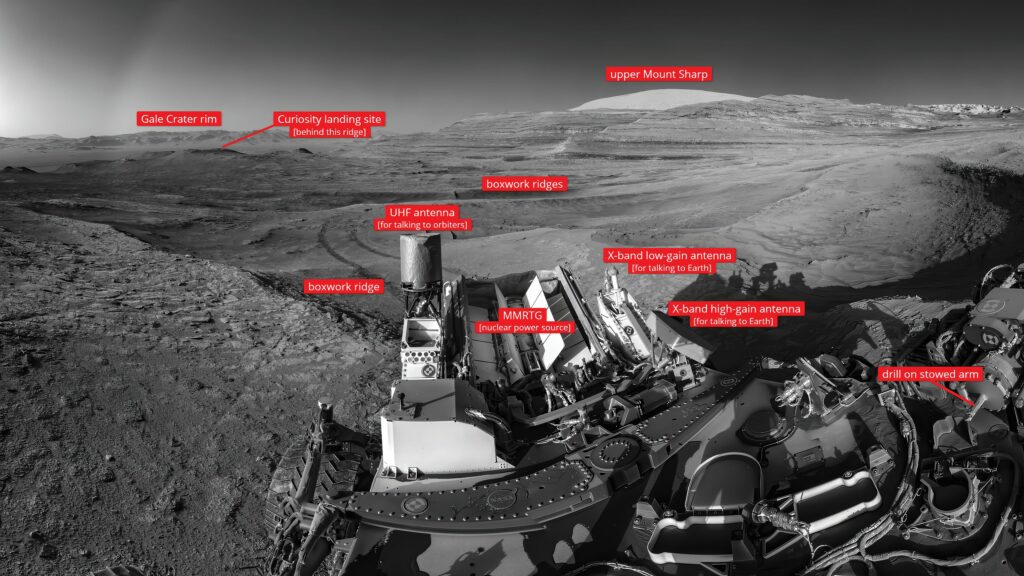Extending the life of the Mars rover

(Image courtesy of NASA/JPL-Caltech)
NASA has updated the capabilities of the Curiosity rover on Mars to extend the mission life, writes Nick Flaherty.
Thirteen years since Curiosity landed, the six-wheeled robot has been given more autonomy and the ability to multitask. There have also been improvements to the efficiency of the vehicle’s radioisotope thermoelectric generator (RTG).
Carrying out its detective work involves a lot of energy. Besides driving and extending a robotic arm to study rocks and cliffsides, Curiosity has a radio, cameras and 10 science instruments that all need power. As do the multiple heaters that keep the electronics, mechanical parts and instruments operating at their best.
The previous Spirit and Opportunity rovers and the InSight lander relied on solar panels to recharge their batteries, but that technology always runs the risk of not receiving enough sunlight to provide power.
Instead, Curiosity and the more recent Perseverance systems use the nuclear power RTG source, which relies on decaying plutonium pellets to create energy and recharge the rover’s batteries. However, as the plutonium decays over time, it takes longer to recharge Curiosity’s batteries, leaving less energy for science each day.

The team at NASA carefully manages the rover’s daily power budget, factoring in every device that draws on the batteries. While these components were all tested extensively before launch, dust, radiation and sharp temperature swings bring out edge cases that engineers couldn’t have expected.
“We were more like cautious parents earlier in the mission,” said Reidar Larsen of NASA’s Jet Propulsion Laboratory in Southern California, which built and operates the rover. Larsen led a group of engineers who developed the new capabilities. “It’s as if our teenage rover is maturing, and we’re trusting it to take on more responsibility.”
Generally, engineers send Curiosity a list of tasks to complete one-by-one before the rover ends its day with a nap to recharge. Now, two or three rover tasks can be safely combined, reducing the amount of time Curiosity is active.
Consolidating tasks can shorten each day’s plan, requiring less time with heaters on and instruments in a ready-to-use state, reducing the energy used.
This means there is less recharging to do before the next day’s plan. Even actions that trim just 10 or 20 minutes from a single activity add up over time, maximising the life of the RTG for more science and exploration down the road.
UPCOMING EVENTS




















